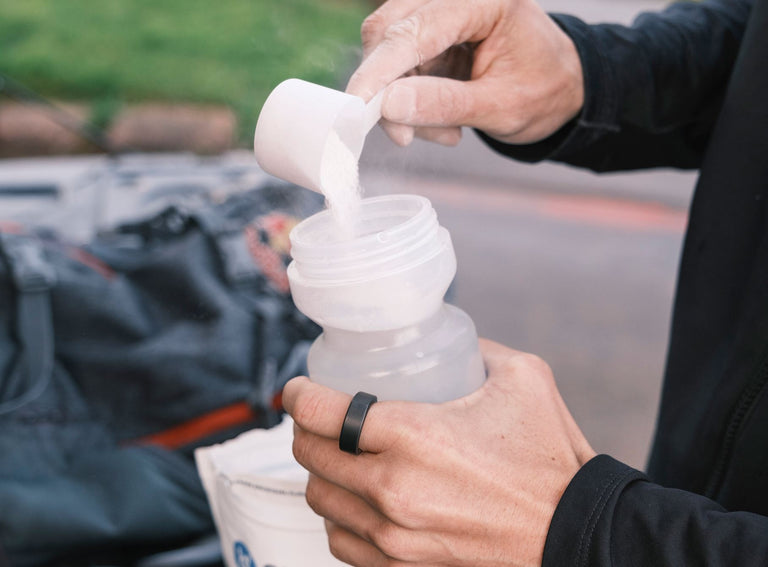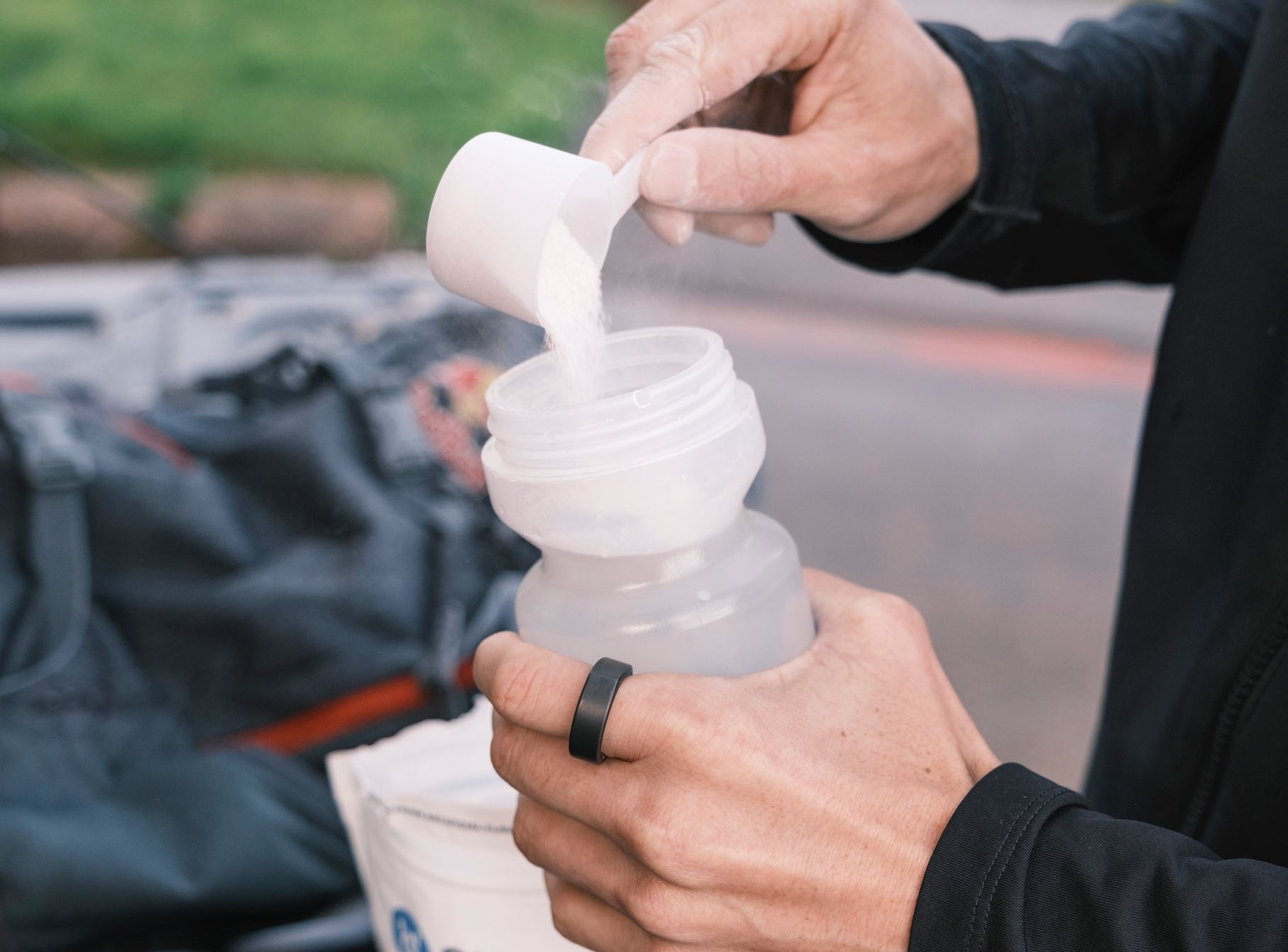Zack will lead participants through demonstrations of movements and exercises along with providing education from a culmination of research and his direct extensive experience with athletes. His clinic will focus on understanding tendon physiology, what leads to tendon adaptation and “mal-adaptation,” why tendon injuries take longer to heal, and how to maintain healthy tendons through monitoring your workload and the way you move.
In This Clinic
- External v. Internal Loads (Stressors)
- “All models are wrong, but some are useful”
- Hormesis
- External Loads
- Heart Rate
- Hormones
- Force Depression
- Psychology
- Biomechanics
- Applications
External v. Internal Loads (Stressors)
-
Non-linear relationship - that’s too simple.
-
The internal load we accumulate on a daily basis is never linear to the external load on our body.
-
-
Two athletes (or two different days) will have two outcomes from the same external load
-
We make lots of assumptions trying to understand internal loads, but we need to remember that we are complex systems as human beings.
-
The goal is to navigate better. If there was a perfect model to manage adaption, everyone would be using it.
-
Think long-term sustainability
-
How sustainable is your lifestyle, exercise routine, nutrition?
-
“All models are wrong, but some are useful”
There isn’t a perfect model to follow. We want to be flexible and more well-rounded with a variety of models.
Things that help us understand the individuals response to load:
-
Previous exposure
- What is the training history of the athlete?
- ACWR - acute/chronic workload
- This is understanding an athlete’s fitness is relation to the external load
-
Internal states
- HRV/RHR/HRR
- Hormone profile
- Sleep and dietary habits
-
External stressors
- Training, environmental, living space, etc.
- All of these contribute to an individual’s ability to adjust internally.
-
Biomechanics
- Anthropometrics
- Storage of elastic energy (skills)
- Rate of force development
- Etc.
-
Psychological profile
- Injury history
- Motivations
- Intentions with training
Stress is not good (or) bad
- All about dosage
- Stress is necessary to get stronger, and adapt. It’s important to understand what kind of stress is affecting you and how it impacts your life.
-
Eustressor
- Good stress (adapation)
-
Distressor
- Bad stress (maladaptation)
Hormesis
- Low doses of training induce an adaptive benefit.
- This is “good” stress.
- High doses of training pose a risk.
- High doses of anything pose a risk.
Major health benefits of exercise (in general):
- Up-regulate antioxidant defense
- Mitochondrial biogenesis
- Improve muscle health
- Prevent injuries!
Everything has a threshold. Everything at too high of a dosage becomes toxic; ex: finger training, limit bouldering, campus board, route protecting, “pre-hab,” water, sleep, screen time, work, etc.
External Loads
These are the things we can manage easily, but do remember we are making a lot of assumptions when managing these.
- Percentage of 1-repetition maximum
-
Percentage of intent
- How hard are they trying?
-
Percentage of possible repetitions per set
- Measure of effort
-
Overall time of contraction
- Time under tension
-
Distance
- Number of clips
- Number of hand moves
- Distance
- Etc.
-
Speed of movement
- Power output
How much you’ve done in the past should help predict what you can do in the future.
As athletes can better and better, the potency of the increased improvement slows.
Heart Rate
- Measures metabolic demand
- Reflects magnitude of stressor
- HR/VO2 relates well to BORG scale.
- The BORG scale was created with the original intention to estimate someone’s percentage of VO2 maximum.
- You can use this to get average of your workout intensity.
- HR recovery matters more!
- Internal training
- RPE + HR = Average %
- Is it changing over time?
- Reducing a rate is a sign of efficiency and a reduction in metabolic stress
- Increased capacity
- Lower % used = less demand
- Using the same warmup (autoregulation), and take notice of increases and decreases:
Variability is health promoting!
Hormones
- Acute and chronic influence:
- Catabolic/anabolic balance
- Large stress = large response.
- If you’re doing a new exercise, you’ll have a bigger reaction - doesn’t necessarily mean it’s bad for you, just new to you.
- GH, NE, Cortisol
- These help mobilize energy
- IGF1, GH, Cortisol help in building
- Hard to be actionable (CNS):
- Intensity, volume, recovery, nutrition
- Nutrition and rest help you recover the fastest with proper macros
- Intensity, volume, recovery, nutrition
- Adaptive cost of exercise (allostasis):
- The price you pay with training
- Stress (cost) too great = injury
- Weight cuts aren’t sustainable
*Only addresses metabolic cost; there are also mechanical costs with exercise
Force Depression
-
Exercise is multi-joint:
- Each muscle has its own recovery process and timeframe
- Assumptions (think about CNS/PNS fatigue)
-
What we could use to assess:
- Velocity, jump height, MVIC
- Have an upper & lower body test!
- Progression doesn’t always or necessarily equal adaption
- Doesn’t always account for internal systems
- There isn’t a “perfect model” or everyone would use it
Rep-Velocity Relationship
- As reps increase, velocity decreases
- Specific to the individual
- Specific to the load
Psychology
The psychological profile of an athlete affects the sustainability of their training. Psychological and biological stress are hard to tell apart.
-
Appraisal process:
- ++ positive
- Spend more time doing these
- -- dangerous
- Spend less time doing this, because the athlete won’t try as hard with these
- +- irrelevant
- ++ positive
-
Appraisal dictates cost:
- Loading is costly
- Vs. “flow states”
- When people have fun doing something, they will enter a flow state
-
Lifestyles influence:
- Low stress = the only ones that adapted
- Moderate stress = recovered
- High stress = maladaptive
- You can’t do it all!
- If we are chronically stressed we only get back to recovery.
- The goal is to gain adaptation, not simply recover.
Biomechanics
-
Movement is a neural load:
- Doesn’t necessarily reflect the force directly
- More skilled athletes have less noise (less cost, more efficiency)
- Unstable training (EMG studies, more cost)
-
People with better mechanics have free energy
- Best athletes move least
- Efficiency increases adaptive capacity
-
Reasons for efficiency:
- CNS - organized movement strategy
- PNS - strength/speed/coordination
- Tissue level - SSC (aka stretch running cycle)
Applications
-
Adaptive cost is system specific:
-
Adaptive-specificity-finger training
-
*Even finger training by itself has a cost to the system. Now consider that cost in addition to your entire session.
-
-
Risks associated with multi-systems / sports training - there’s a higher cost to your entire system
-
Tests are not direct indicators:
-
Increased number, reduced health (it’s costly)
-
It’s hard to take an off season, but that is very important.
-
Function could drop before indicated; you have to track long-term.
-
-
How to track this balance:
-
Loading history
-
Take notes
-
Think of your training age - ACWR
-
-
Performance
-
Up/down/same
-
VBT
-
Are you only recovering? Getting better, worse?
-
-
Internal metrics
-
HRV
-
Hormone profile
-
Sleep habits
-
-
External metrics
-
Surveys
-
Questionnaires
-
Food logs
-
Basic physiology of exercise type
-
-


